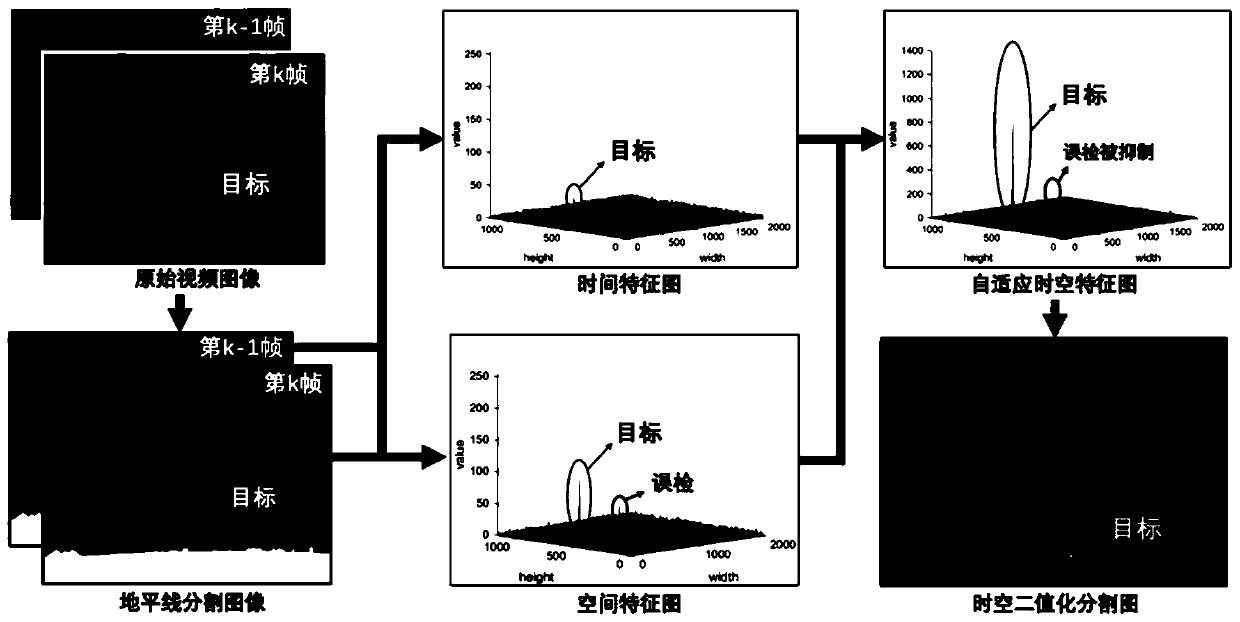Long-distance weak and small target visual detection method based on self-adaptive space-time fusion
A space-time fusion and weak target technology, applied in the field of computer vision, can solve the problems of weak shape or texture features, no fixed motion law, lack of relative motion, etc., to achieve the effect of improving contrast, reducing algorithm complexity, and improving accuracy
- Summary
- Abstract
- Description
- Claims
- Application Information
AI Technical Summary
Problems solved by technology
Method used
Image
Examples
Embodiment Construction
[0041]Example embodiments will now be described more fully with reference to the accompanying drawings. Example embodiments may, however, be embodied in many forms and should not be construed as limited to the examples set forth herein; rather, these embodiments are provided so that this disclosure will be thorough and complete and will fully convey the concept of example embodiments to those skilled in the art.
[0042] figure 1 The flow chart of the method for visual detection of long-distance weak and small targets based on adaptive spatio-temporal fusion is shown. Step 1: Detect the horizon in the video frame by the gradient energy optimization method. If a horizon is detected, filter out the ground background below the horizon to obtain an airspace map; Step 2: Use the dark target inter-frame difference method to process the airspace map , to generate a temporal feature map; Step 3: use row-column decoupling bottom-hat morphological filtering method to process the spati...
PUM
 Login to View More
Login to View More Abstract
Description
Claims
Application Information
 Login to View More
Login to View More - Generate Ideas
- Intellectual Property
- Life Sciences
- Materials
- Tech Scout
- Unparalleled Data Quality
- Higher Quality Content
- 60% Fewer Hallucinations
Browse by: Latest US Patents, China's latest patents, Technical Efficacy Thesaurus, Application Domain, Technology Topic, Popular Technical Reports.
© 2025 PatSnap. All rights reserved.Legal|Privacy policy|Modern Slavery Act Transparency Statement|Sitemap|About US| Contact US: help@patsnap.com



